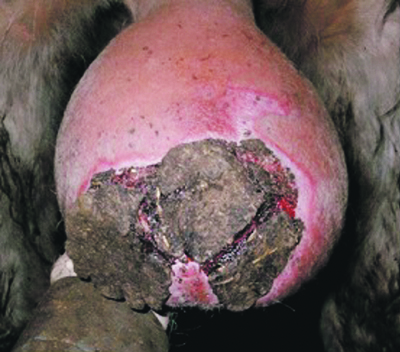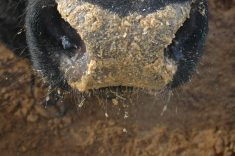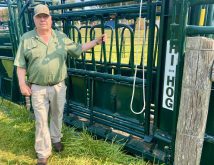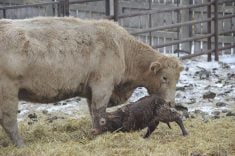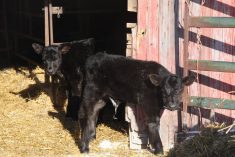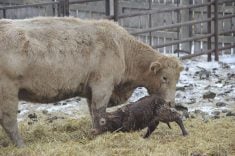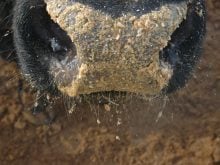Lice protection, deworming , mineral supplements and access to clean, unfrozen water are ways to keep them in top shape
Bulls need as much winter care as cows do to ensure they are in top shape for the next breeding season and management depends on available facilities for keeping them separate from the cows.
“Don’t forget to vaccinate them and provide the health care they need,” said Dr. John Kastelic, a professor in cattle reproductive health at the University of Calgary.
“It’s a shame to lose a bull just because we didn’t vaccinate him for blackleg or some other common disease. We recommend annual vaccination with multivalent clostridial vaccines. These are inexpensive and generally have high efficacy.”
Read Also

Feeder market continues the climb
For the week ending Aug. 30, Western Canadian feeder cattle markets traded $4-8 per hundredweight higher on average.
Lice can be an issue in winter, especially if bulls were deloused too early in the fall. If excessive rubbing is noticed, they should be treated again so they don’t lose their insulating winter hair.
Deworming may also be helpful. If bulls are confined it’s important to feed in a bunk rather than on the ground, to break the fecal-oral transmission of disease. If bulls are out in a pasture and fed hay or pellets, feed on clean ground, Kastelic said.
Clean, unfrozen water is also important, with minimal fecal contamination.
“It’s best to have a water source like a stock trough rather than having them drink from a dugout or stream,” he said.
Bulls can get by on snow but they do better with adequate water. Snow may become crusted and hard to consume and if they don’t drink enough, they won’t eat enough either.
Bulls should have access to mineralized salt, since mineral deficiencies can lead to health issues. Check with a veterinarian to determine the type of supplements needed to balance the diet and make up for deficiencies in the feed.
A clean, healthy environment is important.
“Good management simply means doing a lot of things well — paying attention to all the small but important details such as vaccinations, parasite control, etc., — just basic good husbandry,” Kastelic said.
Feed should be adequate and free of mould.
“Sometimes we have issues with ergot on cereal grains. This can cause vasoconstriction and diminished circulation to the extremities. Cattle can lose ear tips and suffer from gangrene. Other toxins like mould can be harmful and some have estrogen-like properties which can interfere with semen quality.”
Adequate bedding in cold weather is key to limit risk of scrotal frostbite.
“A little frostbite won’t be detrimental, if it’s just on the bottom of the scrotum. This will generally heal. The bull might have temporary reduction in sperm quality, but unless you are fall calving and breeding cows during winter, it usually won’t be a problem,” Kastelic said.
If frostbite covers a larger scrotal area, it may create problems.
“If you are checking a bull and push the testes up and the scrotum puckers up, this indicates adhesions and will have a relatively poor prognosis for recovery.”
Travis Olson of Ole Farms in Athabasca, Alta., has had a lot of experience with bulls. He runs 1,100 registered Angus cows and 300 commercial cows.
“When taking care of bulls, especially older bulls, they need lots of room. I keep them in large pastures, with good bedding in several areas because some bulls don’t get along. If I have 60 mature bulls in one pasture I put bedding in at least two or three locations,” he said.
“An older bull might be dominant during breeding season but maybe doesn’t have the energy or desire in winter to put up with an aggressive three-year-old that’s trying to come up through the pecking order. The older bull might be able to beat the younger bull, but he doesn’t want to get into a scrap.”
Multiple bedding areas ensure animals can separate themselves if desired.
“You need bedding and a good windbreak in at least two locations so that if an older bull is being pestered, he has somewhere else to go,” said Olson.


